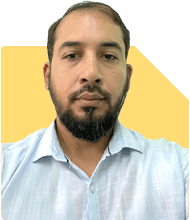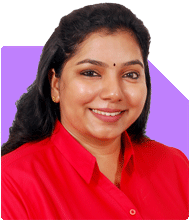Mayank Chandel |1991 Answers |Ask -Follow
IIT-JEE, NEET-UG, SAT, CLAT, CA, CS Exam Expert - Answered on Jun 11, 2024
Besides coaching students for entrance exams, he also guides Class 10 and 12 students about career options in engineering, medicine and the vocational sciences.
His interest in coaching students led him to launch the firm, CareerStreets.
Chandel holds an engineering degree in electronics from Nagpur University.... more

My has to chose among NIT Srinagar/Agartala/meghalaya/ jamshedpur (electrical/ mechanical) OR Thapar (CE) OR Manipal CS(AIML) OR RVCE ( mechanical) OR DNS (merchant Navy). Please suggest the best pick
You may like to see similar questions and answers below
Aasif Ahmed Khan |164 Answers |Ask -Follow
Tech Career Expert - Answered on Jul 02, 2024
Aasif Ahmed Khan |164 Answers |Ask -Follow
Tech Career Expert - Answered on Jul 10, 2024
Mayank Chandel |1991 Answers |Ask -Follow
IIT-JEE, NEET-UG, SAT, CLAT, CA, CS Exam Expert - Answered on Feb 05, 2025
Mayank Chandel |1991 Answers |Ask -Follow
IIT-JEE, NEET-UG, SAT, CLAT, CA, CS Exam Expert - Answered on Feb 05, 2025
Milind Vadjikar |976 Answers |Ask -Follow
Insurance, Stocks, MF, PF Expert - Answered on Feb 05, 2025
Milind Vadjikar |976 Answers |Ask -Follow
Insurance, Stocks, MF, PF Expert - Answered on Feb 05, 2025
Ravi Mittal |520 Answers |Ask -Follow
Dating, Relationships Expert - Answered on Feb 05, 2025
Ramalingam Kalirajan |7838 Answers |Ask -Follow
Mutual Funds, Financial Planning Expert - Answered on Feb 05, 2025
Pushpa R |49 Answers |Ask -Follow
Yoga, Mindfulness Expert - Answered on Feb 05, 2025
Pushpa R |49 Answers |Ask -Follow
Yoga, Mindfulness Expert - Answered on Feb 05, 2025
Dr Nagarajan Jsk |231 Answers |Ask -Follow
NEET, Medical, Pharmacy Careers - Answered on Feb 05, 2025
Milind Vadjikar |976 Answers |Ask -Follow
Insurance, Stocks, MF, PF Expert - Answered on Feb 05, 2025























